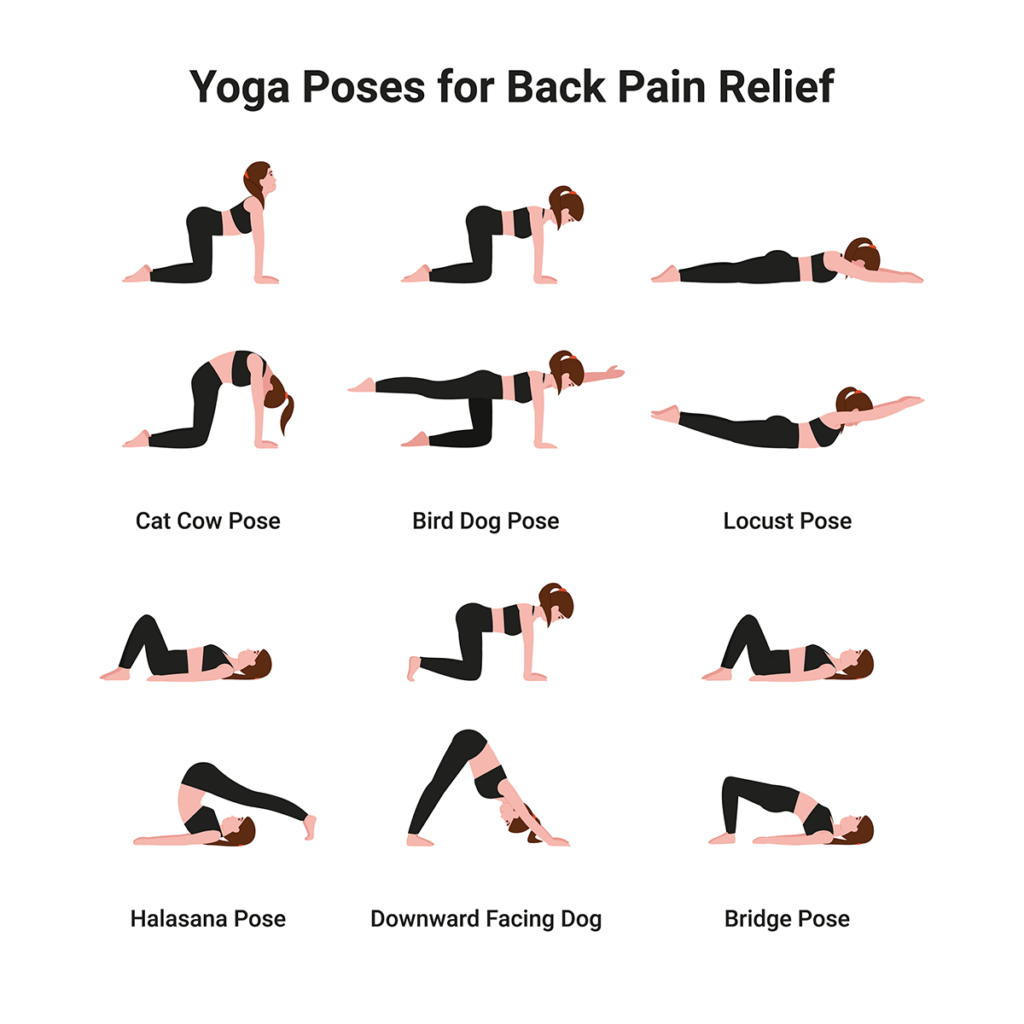Relieving pain can provide great comfort to people suffering from health issues. So they find many ways to get that pain out of their bodies. One natural way to alleviate pain is through yoga.
Yoga is more than just a series of stretches and poses; it is a holistic approach that integrates the mind, body, and spirit. This ancient practice, rooted in Indian philosophy, offers numerous health benefits, particularly pain management.
At Momentum Medical, we understand the challenges of managing chronic pain and are committed to offering holistic and effective solutions. Feel free to call us, and we can talk about managing your pain. Learning about yoga would be a good start!
Setting the Stage: Exploring Yoga as a Holistic Approach to Pain Management
If you want a more natural way to relieve pain, learn about yoga, one of the most popular methods today, which is effective in treating body pain.
Understanding Pain and Yoga
Pain has different levels and can be classified as acute or chronic. When we say acute, the pain is felt due to a cause and goes away when the cause is treated. For chronic pain, the pain can last longer than weeks or even months. Usually, the underlying cause is hard to determine.
Physical Benefits of Yoga for Pain
Improved Flexibility and Joint Health
Painful joints often happen as they flex during movements, and almost every movement involves using joints. Flexing the joint is encouraged to develop a more flexible joint when doing yoga. When your joints become flexible, they are no longer susceptible to pain whenever you use them.
Stress Reduction and Pain Alleviation
Mind-Body Connection
Yoga not only aids the body physically but also mentally. Stress can give a person a troubled mind and also result in body pain.
Techniques in yoga called Pranayama, where deep and controlled breathing is done, can help calm the nervous system. When the mind is calm, the pain felt is reduced. A relaxed mind can also relax the whole body.
Enhancing Body Awareness
Mindful Movement and Pain Signals
It has been proven that yoga can calm the mind and develop a heightened awareness of the body. This process makes the body’s senses respond to pain. It has shown positive effects on physical function, pain receptors, and the whole quality of life of the patient. The body can react to pain faster when the pain receptor works well.
Yoga Poses for Targeted Pain Relief
In a world where stress and physical discomfort are increasingly prevalent, discovering effective methods for managing and alleviating pain is essential for a balanced and healthy lifestyle. Yoga, an ancient practice deeply rooted in holistic wellness, offers more than just physical benefits like flexibility or strength; it represents a profound journey toward healing and harmony.
Back Pain: Cat-Cow Pose
This pose flexes the spine, causing tension in the back muscles, which begin to relax and increase flexibility.

Neck and Shoulder Pain: Child’s Pose
This type of pose can help relieve headaches as well as neck pain, and you can follow the steps in doing this pose:
- Start by lengthening your spine and walking your hand in front of you.
- Hold your hips so you can move forward.
- To support your neck, keep your hands extended.
Joint Pain: Downward-Facing Dog
This pose aims to strengthen the whole body, and it is used to relieve arthritis since all joints are being stretched.
Breathing Techniques for Pain Management
Breathing techniques, particularly Pranayama from the yogic tradition, can be a powerful tool in managing pain. Pranayama involves various controlled breathing exercises that help regulate the body’s response to pain.
These techniques focus on calming the mind and reducing stress, which can alter the perception and intensity of pain. By practicing regular Pranayama, individuals may find significant relief from chronic pain, as it aids in relaxing the body and enhancing mental clarity.
Incorporating Pranayama into pain management strategies offers a non-invasive way to cope with pain and improve overall well-being.
Yoga as Complementary Therapy
Yoga is increasingly recognized as an effective complementary therapy in pain management plans.
By integrating yoga into these plans, individuals can benefit from its holistic approach, which combines physical postures, controlled breathing, and meditation. Yoga’s gentle movements can help alleviate pain, improve flexibility and strength, and reduce stress and anxiety, often associated with chronic pain.
As a mind-body practice, yoga not only addresses the physical aspects of pain but also fosters mental and emotional well-being, making it a comprehensive tool for managing various types of pain.
Scientific Backing and Research Findings
Yoga’s role in pain management is increasingly supported by scientific research, showing it can lessen pain and enhance physical function in conditions like lower back pain and arthritis.
Its ability to improve flexibility and muscle strength, reduce stress, and boost mindfulness makes it an effective complement to conventional medical treatments. Momentum Medical offers expert guidance and personalized care plans for those interested in integrating yoga into their pain management strategy. Contact Momentum Medical to explore how yoga can be part of your journey towards pain relief and overall wellness.
FAQs
How does yoga help with pain management?
Muscle weakness, or tightness, is a common cause of body pain. Loosening it is the solution for pain relief. Yoga poses are done to strengthen and stretch specific muscles and joints.
What are the benefits of exercise for pain management?
- Yoga is a form of exercise that promotes the release of endorphins, which are the body’s natural painkillers.
- Yoga is a low-impact exercise, so most people can follow it and incorporate it into their daily routine.
- Yoga has many poses that can be used depending on the intensity of pain you are feeling. As there are pains that inhibit a person’s mobility, yoga can still be used as a pain reliever.
- The best benefit yoga can give is uplifting a person’s overall wellness, as it has positive effects both physically and mentally. Being mentally relaxed alone can help alleviate any pain a person is experiencing.
What are the benefits of effective pain management?
Managing your pain can give you a more peaceful mind and a refreshed body. Pain can lead to anxiety and depression. When pain is taken away, your mental being can be uplifted, too. Experiencing pain can cause people to think negatively. Still, once the pain is relieved, the possibility of shifting to a positive mindset is higher.
What are the benefits of yoga for joint pain?
Yoga effectively relieves joint pain by promoting mobility through stretching exercises.

